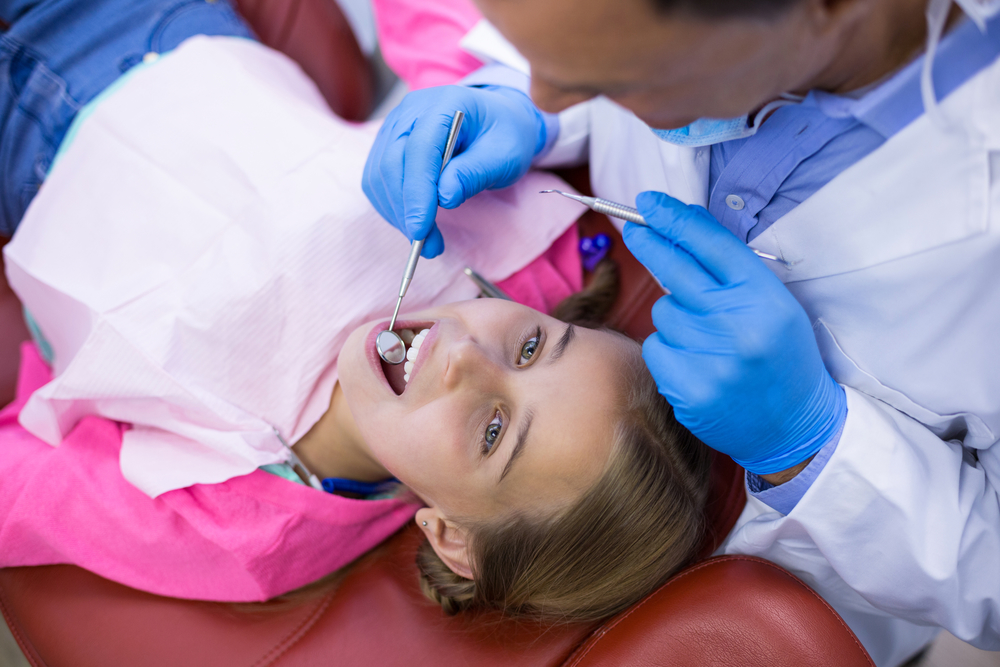
The American Association of Orthodontists (AAO) suggests that children be seen by an orthodontist by the age of seven. Having an assessment at a young age can indicate whether a child will likely need braces later on as their permanent teeth begin to replace their baby teeth.
Most young children do not need Phase one treatment, but this cannot be determined without a proper evaluation. Orthodontists have their patients’ best interest at heart and will only recommend early treatment if it is absolutely necessary.
Read on to learn what a two-phase orthodontic treatment plan consists of and what to expect.
Advantages of Two-Phase Treatment
Two-phase orthodontic treatment is a specialized process that combines straightening the teeth in addition to physical, facial structure changes. The purpose behind a two-phase treatment is to maximize the opportunity to focus on giving a child their best chance at a straight, healthy smile as soon as possible.
Phase One
The goal of phase one orthodontic treatment is to help the jaw develop in a way that will accommodate all of the permanent teeth your child will have at some point in the near future. This phase allows us to plan ahead and improves the way the upper and lower jaws fit together. Children who often exhibit early signs of jaw issues are candidates for early orthodontic treatment.
Most phase one treatments do not include braces. Instead, this is the time when expanders and other appliances are used to prepare the jaws for the incoming adult teeth.
Planning Ahead
A child can benefit tremendously from early phase one treatment. Being proactive may prevent the removal of permanent teeth later in life, or the need for undergoing surgical procedures to realign the jaws.
Records That Determine Treatment
From your child’s very first orthodontic appointment, their records will be created and taken into consideration from that point moving forward to determine their treatment plan. From the type of appliances used to the duration of their treatment, these records are vital. Records will consist of models of the teeth, X-rays, and photographs.
Phase One Duration
Phase one orthodontic treatment usually occurs between the ages of 7 and 11 years old and lasts for approximately 10-14 months. After the first phase is complete, a retainer may be suggested until phase two begins.
Resting Period
After phase one has been completed, the remaining permanent teeth are left alone as they erupt. Retaining devices may or may not be recommended depending on if they will interfere with eruption or not. A successful first phase will have created an adequate amount of room for the remaining permanent teeth to properly erupt and avoid impaction.
Phase Two
Phase two typically begins once most of the adult teeth are in place, and the child’s 12-year molars are close to erupting. This stage of treatment can start as early as age 11 and can be done throughout a person’s teen or adult years. The goal of phase two is to ensure that each tooth has an exact location in the mouth where it is aesthetically pleasing as well as functional.
Achieving Your Goals
For most people, a beautiful smile is the most obvious benefit of orthodontics. In addition to excellent aesthetics, Thomas Orthodontics also works for each patient to establish proper tooth function that promotes a lifetime of great periodontal health.
During your child’s orthodontic evaluation, you will be given a tour of our office so you can meet our team and see how we can help you achieve your smile goals. Recommendations, including if we will be recommending a two-phase treatment plan, will be discussed with you during your consultation. If your child is seven or older, schedule a consultation appointment for them with Thomas Orthodontics today for a recommended treatment plan.





